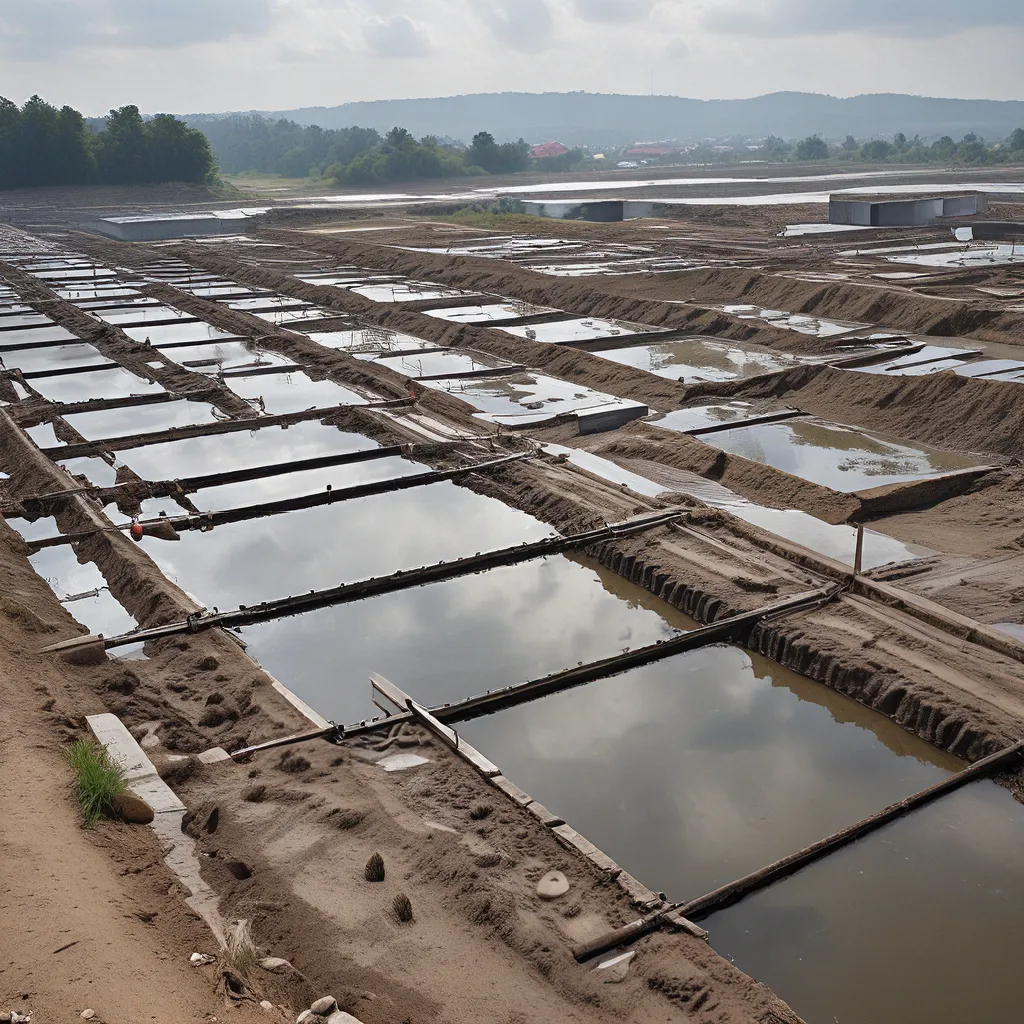
Weathering the Storm: How Wastewater Treatment Plays a Crucial Role in Disaster Preparedness
As I sit here, sipping my coffee and looking out at the stormy weather outside, I can’t help but think about the vital role our wastewater treatment systems play in keeping our communities safe and resilient, even in the face of natural disasters. It’s easy to take these behind-the-scenes operations for granted, but when disaster strikes, their importance becomes crystal clear.
You see, wastewater treatment plants are the unsung heroes of our infrastructure, quietly working around the clock to protect our waterways, our environment, and ultimately, our public health. And when natural disasters like hurricanes, floods, or earthquakes hit, these facilities play a critical role in maintaining essential services and safeguarding our communities.
Imagine a scenario where a powerful storm knocks out power and damages critical infrastructure. In the midst of the chaos, the last thing anyone wants to worry about is raw sewage spilling into the streets or contaminating our drinking water. But that’s exactly what could happen if our wastewater treatment systems aren’t prepared to handle the onslaught.
That’s why disaster resilience is such a crucial aspect of wastewater management. It’s not just about keeping the toilets flushing and the sinks draining; it’s about ensuring the continuity of a vital service that protects our health, our environment, and our overall well-being, even in the toughest of times.
Safeguarding the Flow: How Wastewater Treatment Stays Resilient in Disasters
So, what does disaster resilience look like for wastewater treatment facilities? It’s a multi-faceted approach that covers everything from infrastructure hardening to emergency planning and response.
Let’s start with the infrastructure. Modern wastewater treatment plants are designed with redundancy and backup systems in mind, to ensure that even if one component fails, the overall system can keep running. This might include things like alternative power sources, backup generators, and multiple treatment trains that can operate independently.
But it’s not just about the physical infrastructure; it’s also about the people and processes that keep these facilities running. Comprehensive emergency plans, regular training, and robust communication protocols are all critical components of disaster resilience. When a crisis hits, wastewater treatment operators need to be prepared to respond quickly and effectively, coordinating with local authorities and other stakeholders to maintain essential services.
And let’s not forget the importance of environmental protection. Wastewater treatment plants play a crucial role in safeguarding our waterways and ecosystems, even in the aftermath of a disaster. By ensuring that treated effluent meets strict environmental standards, these facilities help prevent the spread of pollution and contamination that could have devastating consequences for local wildlife and communities.
Building a Resilient Future: How Wastewater Treatment Adapts to Changing Threats
But the story of wastewater treatment and disaster resilience doesn’t end there. As we look to the future, we’re faced with a rapidly changing landscape of threats – from climate change and extreme weather events to cyber attacks and supply chain disruptions. And the wastewater industry is rising to the challenge, constantly evolving and adapting to ensure that our communities remain safe and secure.
One of the key ways the industry is doing this is through innovation and technology. From advanced monitoring systems that can detect emerging threats in real-time to automated control systems that can respond to disruptions with lightning speed, the wastewater treatment of tomorrow is becoming increasingly resilient and adaptive.
And it’s not just about the technology; it’s also about the collaboration and coordination between various stakeholders, from government agencies and regulatory bodies to private sector partners and community organizations. By working together, we can identify vulnerabilities, share best practices, and develop comprehensive strategies to address the complex and ever-changing landscape of disaster resilience.
Conclusion: Wastewater Treatment – The Unsung Hero of Disaster Preparedness
At the end of the day, wastewater treatment may not be the most glamorous or high-profile aspect of our infrastructure, but it’s undoubtedly one of the most critical. When disaster strikes, these unsung heroes step up to the plate, keeping our communities safe, our environment protected, and our essential services running, no matter what Mother Nature throws our way.
So, the next time you flush the toilet or wash your hands, take a moment to appreciate the hard-working men and women who are safeguarding our wastewater systems and building a more resilient future for us all. Because in the face of any disaster, big or small, they’ll be there, ready to weather the storm and keep the flow going strong.
Alpha Wastewater is committed to providing reliable and resilient wastewater treatment services to communities across the country. By investing in cutting-edge technology, emergency preparedness, and strong partnerships, we’re helping to ensure that our essential infrastructure can withstand even the toughest challenges.